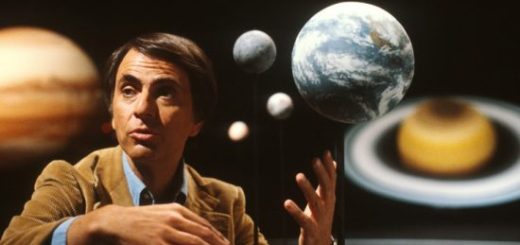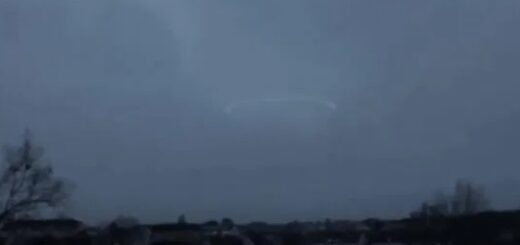Rare Celestial Event: Red Giant Revived Neighboring Dead Neutron Star Bringing It Back To Life
A rare celestial phenomenon has been witnessed by ESA’s Integral space observatory.
It was the moment when winds emitted by a swollen red giant star revived its slow-spinning companion, the core of a dead star, bringing it back to life in a flash of X-rays.

Artist impression depicting winds from a red giant star impacting a neutron star to create prolonged X-ray emission. Such a system is rare: no more than ten are currently known. One was detected “switching on” in X-rays in August 2017, by ESA’s Integral satellite. Credit: ESA
The observations revealed a strongly magnetized and slowly rotating neutron star that had likely just begun to feed on material from a neighboring red giant star.
It is not uncommon to find stars paired together, but the new system of a neutron star and red giant is a particularly rare breed known as a ‘symbiotic X-ray binary’, with no more than 10 known.
“Integral caught a unique moment in the birth of a rare binary system,” says Enrico Bozzo from University of Geneva and lead author of the paper . “The red giant released a sufficiently dense slow wind to feed its neutron star companion, giving rise to high-energy emission from the dead stellar core for the first time.”
The X-ray flare was first detected by Integral on 13 August 2017 from an unknown source in the direction of the crowded center of our Milky Way. The sudden detection triggered a slew of follow-up observations in the following weeks to pin down the culprit.
The pairing is certainly peculiar. ESA’s XMM-Newton and NASA’s NuSTAR space telescopes showed that the neutron star spins almost every two hours – very slow compared with other neutron stars, which can spin up to many times per second. Then, the first measurement of the magnetic field of such a neutron star revealed it to be surprisingly strong.
“These objects are puzzling,” says Enrico. “It might be that either the neutron star magnetic field does not decay substantially with time after all, or the neutron star actually formed later in the history of the binary system. That would mean it collapsed from a white dwarf into a neutron star as a result of feeding off the red giant over a long time, rather than becoming a neutron star as a result of a more traditional supernova explosion of a short-lived massive star.”
With a young neutron star and an old red giant, at some point the winds travelling from the puffed-up giant will begin to rain on to the smaller star, slowing its spin and emitting X-rays.
“We haven’t seen this object before in the past 15 years of our observations with Integral, so we believe we saw the X-rays turning on for the first time,” says Erik Kuulkers, ESA’s Integral project scientist. “We’ll continue to watch how it behaves in case it is just a long ‘burp’ of winds, but so far we haven’t seen any significant changes.”
Stars the mass of our Sun, and up to eight times more massive, evolve into red giants towards the end of their lives. Even larger stars, up to 25–30 times more massive than the Sun, race through their fuel and explode in a supernova, sometimes leaving behind a spinning stellar corpse with a strong magnetic field, known as a neutron star. This tiny core packs the mass of nearly one and half Suns into a sphere only 10 km across, making them some of the densest celestial objects known.



 Creators of mankind
Creators of mankind Description of “Tall white aliens”
Description of “Tall white aliens” Where they came from?
Where they came from? About hostile civilizations
About hostile civilizations The war for the Earth
The war for the Earth “Tall white aliens” about eternal life
“Tall white aliens” about eternal life Video: “Nordic aliens”
Video: “Nordic aliens” Aliens
Aliens Alien encounters
Alien encounters The aliens base
The aliens base UFO
UFO Technology UFO
Technology UFO Underground civilization
Underground civilization Ancient alien artifacts
Ancient alien artifacts Military and UFO
Military and UFO Mysteries and hypotheses
Mysteries and hypotheses Scientific facts
Scientific facts


















